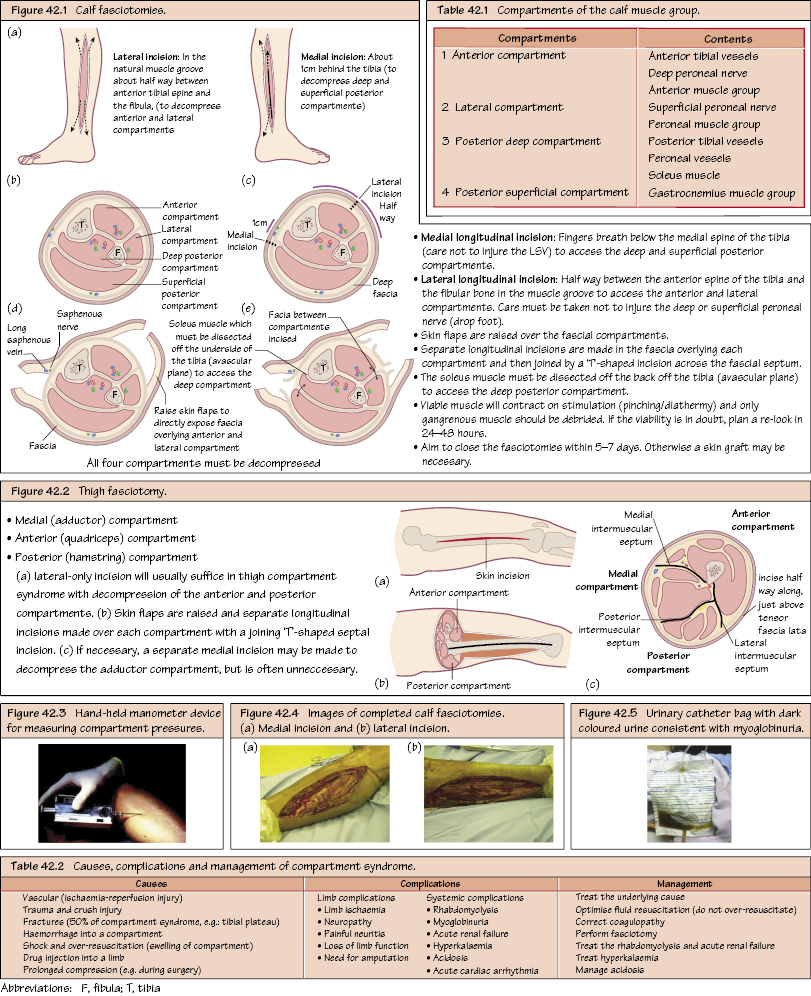Compartment Syndrome and Fasciotomy This is an elevated and sustained pressure within a fascial compartment. The inelastic fascia lacks the necessary compliance to accommodate tissue swelling with a resultant increase in the absolute pressure. Affected compartments include calf (the most common), thigh, buttocks, forearm, hands and feet (rare). The dominant early symptom is pain but all the Ps of an acute limb may be present (see Chapter 37). The pain is often described as ‘out of proportion’ to the clinical findings, but this is a variable finding. There is pain on passive stretch of the muscle (e.g. flexing the toe, which causes stretch within the calf muscle). Patients will also have pain on active movement of the muscle within the compartment. A tender compartment is a sign of muscle ischaemia. This is a direct result of the high compartmental pressure leading to venous ischaemia and capillary congestion. A loss of arterial pulses is a very late (often irreversible) sign. There is a high rate of limb loss (amputation) associated with missed (untreated) CS.

Compartment Syndrome (CS)
Aetiology
Symptoms and Signs
Complications
Tissue Ischaemia
Neuropathy
Stay updated, free articles. Join our Telegram channel

Full access? Get Clinical Tree


